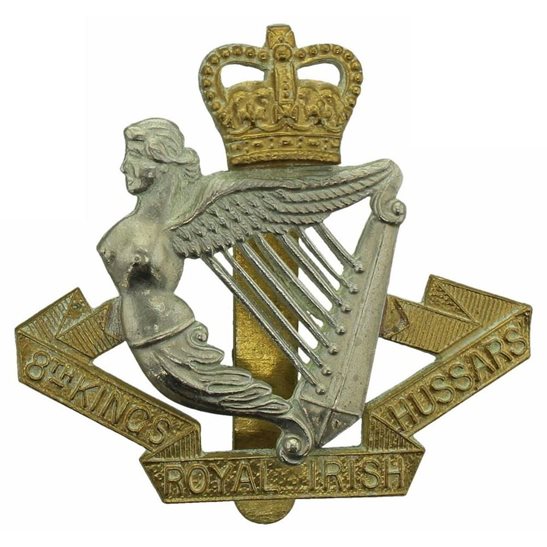Cap badge of the 8th King's Royal Irish Hussars
Harry Harrison was born in Melton on 10th July 1883, he was the youngest son of Walter and Harriet. On 22nd October 1900, he was working as a painter and paper-hanger before deciding to enlist in the army, joining the 12th Lancers. Less than a year later and Harry was in South Africa fighting in the Boer War. When that war was over, his battalion was posted to India, arriving there in March 1903. He remained there for the next eleven years. The 12th Lancers returned to England in February 1910, but Harry chose to stay in India, first attached to a Depot Company and then, in September 1910, he joined the 8th (King’s Royal Irish) Hussars.
When war was declared in Europe, the 8th Hussars were recalled to fight in France. On 10th October 1914, C and D Squadrons of the 8th Hussars boarded the SS Surada and, five days later, A and B Squadrons boarded the SS Glencuny, both bound for France. All four squadrons landed in Marseilles on 10th November 1914 to become part of the 1st Indian Cavalry Division.
Harry’s first involvement on the front line was on 9th December 1914, during the Battle of Givenchy. From then on, the battalion was held in reserve, awaiting the breakthrough by the infantry that would allow a cavalry charge to take place. In the meantime, they spent much of their time digging trenches. In 1916, the 8th Hussars were at The Somme, in July they fought at Bazentin and the following month, at Fleurs-Corcelette. On 27th March 1917, the 8th Hussars took part in the last cavalry charge of the war against a German position at Villers-Faucon.
Harry remained in the 8th Hussars throughout the war and when it was over, as a regular soldier. He was sent with his battalion back to India, followed by Mesopotamia (Iraq) and then to Egypt. For his military service, Harry received the Queen’s South Africa Medal and clasps, the King’s South Africa Medals and clasps, the 1914-15 Star, the British War and Victory Medals and the General Service Medal with Iraq clasp.
In 1919, Harry married Florence Hoad in Cheriton, Kent. When Harry was discharged from the services, he and Florence were living in Crown Street, Ipswich. By 1939, they had moved to Southwark, London, where Harry’s occupation was shown as a housekeeper as well as an army pensioner. Records show that his pension paid from his discharge in 1922 was two shillings and eleven pence per day for life.
